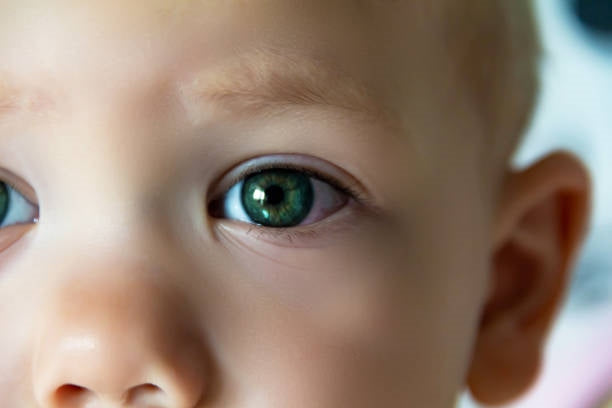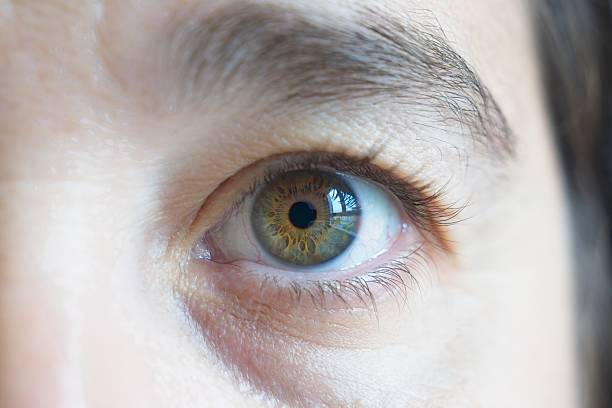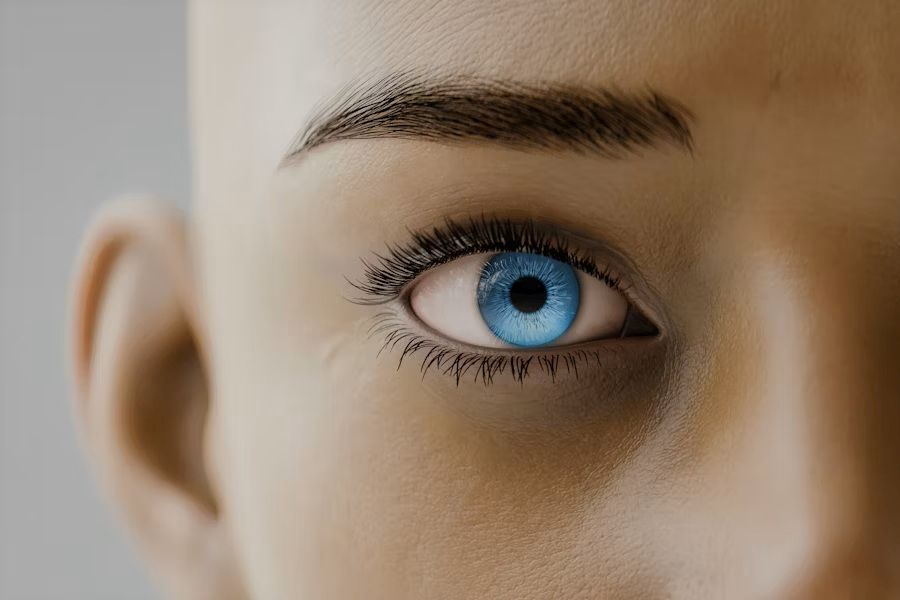Your Cart is Empty
What Are the Chances of Your Baby Having Colored Eyes?

The anticipation of a new baby brings with it a world of wonder and curiosity. Among the many questions expectant parents ponder, one intriguing query often arises: "What are the odds of my baby getting colored eyes?" Eye color is a fascinating aspect of human genetics, and understanding the factors that influence it can be both exciting and enlightening. In this article, we'll delve into the intricate world of eye color inheritance, exploring the science behind it and the probabilities of various eye color combinations.
Table of Contents
-
Understanding Eye Color Genetics
-
Dominant and Recessive Eye Color Genes
-
Factors Influencing Eye Color Inheritance
-
Probability of Eye Color Combinations
-
Common Eye Color Inheritance Patterns
-
Rare Eye Color Possibilities
-
Environmental Factors Affecting Eye Color
-
Predicting Your Baby's Eye Color
Understanding Eye Color Genetics
The genetics behind eye color is a complex interplay of multiple genes. Contrary to what many believe, it's not a simple matter of one gene determining eye color. Instead, several genes work together to produce the final eye color we see.
The primary genes responsible for eye color are OCA2 and HERC2. These genes control the production and storage of melanin in the iris, which is the pigment that gives color to our eyes, skin, and hair. Other genes, such as TYRP1, TYR, and SLC24A4, also play roles in determining eye color, albeit to a lesser extent.
Understanding this genetic complexity is crucial because it explains why eye color inheritance isn't always straightforward. It's not uncommon for children to have eye colors that seem to "skip" generations or appear unexpectedly based on their parents' eye colors.
Dominant and Recessive Eye Color Genes
In the realm of eye color genetics, certain traits are considered dominant while others are recessive. Brown eyes are generally dominant over blue and green eyes, which are considered recessive. However, the reality is more nuanced than this simple dominant-recessive model suggests.
Here's a simplified breakdown:
-
Brown eyes: Dominant
-
Green eyes: Recessive to brown, but dominant to blue
-
Blue eyes: Recessive
This hierarchy means that if a person has one gene for brown eyes and one for blue eyes, the brown eye gene will typically be expressed. However, due to the involvement of multiple genes, exceptions to this rule are possible.
It's important to note that even if both parents have blue eyes, there's still a small chance their child could have brown eyes if both parents carry a recessive gene for brown eyes.
Factors Influencing Eye Color Inheritance
Several factors influence the inheritance of eye color:
-
Parental Eye Colors: The eye colors of both parents play a significant role in determining their child's eye color.
-
Genetic Variation: Random genetic variations can occur, leading to unexpected eye colors.
-
Ancestral Influence: Eye colors from grandparents or even great-grandparents can sometimes appear in children.
-
Gene Interactions: The way different genes interact can produce unexpected results.
-
Ethnic Background: Certain eye colors are more common in specific ethnic groups, influencing the likelihood of particular eye colors.
Understanding these factors helps explain why predicting eye color isn't always straightforward and why surprises can occur.
Probability of Eye Color Combinations
While it's impossible to predict eye color with 100% accuracy, we can estimate probabilities based on parental eye colors. Here are some common scenarios:
-
Two Brown-Eyed Parents:
-
75% chance of brown eyes
-
18.75% chance of green eyes
-
6.25% chance of blue eyes
-
-
One Brown-Eyed Parent, One Blue-Eyed Parent:
-
50% chance of brown eyes
-
50% chance of blue eyes
-
-
Two Blue-Eyed Parents:
-
99% chance of blue eyes
-
1% chance of green or brown eyes
-
-
One Blue-Eyed Parent, One Green-Eyed Parent:
-
50% chance of blue eyes
-
50% chance of green eyes
-
These probabilities are approximate and can vary based on the specific genetic makeup of the parents.
Common Eye Color Inheritance Patterns
Certain inheritance patterns are more common than others:
-
Brown to Brown: When both parents have brown eyes, it's most likely the child will also have brown eyes.
-
Blue to Blue: Two blue-eyed parents are highly likely to have a blue-eyed child.
-
Mixed to Either: When one parent has brown eyes and the other blue, the child could inherit either color, with brown being more likely.
-
Green Wild Card: Green eyes can appear in various combinations, often unexpectedly.
-
Grandparent Throwback: Sometimes, a child's eye color may resemble that of a grandparent rather than a parent.
These patterns highlight the fascinating variability in eye color inheritance and the potential for surprises in family genetics.
Rare Eye Color Possibilities
While brown, blue, and green eyes are the most common, there are some rare eye colors that can occur:
Amber Eyes: This golden-copper tone is quite rare and is often mistaken for light brown.
Gray Eyes: True gray eyes are extremely rare and are often confused with light blue eyes.
Heterochromia: This condition results in two different colored eyes in the same individual or different colors within the same iris.
Red or Violet Eyes: These extremely rare colors are usually associated with albinism.
The occurrence of these rare eye colors depends on unique genetic combinations and, in some cases, specific genetic conditions.
Environmental Factors Affecting Eye Color
While genetics play the primary role in determining eye color, some environmental factors can influence the final appearance:
-
Light Exposure: The amount of light a baby is exposed to after birth can affect melanin production in the iris.
-
Age: Some babies are born with blue eyes that darken over time as melanin production increases.
-
Medical Conditions: Certain conditions can affect eye color, such as Horner's syndrome or Fuchs heterochromic iridocyclitis.
-
Medications: Some medications can alter eye color as a side effect, though this is rare.
These factors underscore the dynamic nature of eye color and how it can change over time or due to external influences.
Predicting Your Baby's Eye Color
While it's exciting to speculate about your baby's eye color, it's important to remember that accurate prediction is challenging. Here are some tips:
-
Consider Family History: Look at the eye colors of grandparents and great-grandparents for potential clues.
-
Understand Probabilities: Use the probability estimates mentioned earlier as a general guide.
-
Be Patient: A baby's true eye color may not be apparent until 6-12 months after birth.
-
Embrace Uncertainty: Remember that genetics can sometimes produce unexpected results.
-
Consult a Genetic Counselor: For more detailed predictions, consider speaking with a genetic counselor.
The journey of discovering your baby's eye color is part of the joy of parenthood. While science can provide estimates and probabilities, the final result is often a delightful surprise.
In conclusion, the chances of your baby having colored eyes depend on a complex interplay of genetic factors. While brown eyes are generally more common due to their genetic dominance, the possibility of blue, green, or even rarer eye colors always exists. The unpredictability of eye color inheritance adds an element of excitement to the anticipation of meeting your new baby. Regardless of the outcome, your child's eyes will be uniquely beautiful, a window to their soul and a reflection of their genetic heritage.
Leave a comment
Comments will be approved before showing up.




